
Did you know that your home garden can yield more produce than some local farms? By understanding key principles like soil quality and plant selection, you can create a productive food garden.
It’s easy to get started and have fun growing your own food. You can transform your gardening experience and boost your harvest with simple strategies.
Choosing the right location and incorporating seasonal changes are important tips to know. Start your journey to a thriving food garden at home and get ready to enjoy fresh produce from your own backyard.
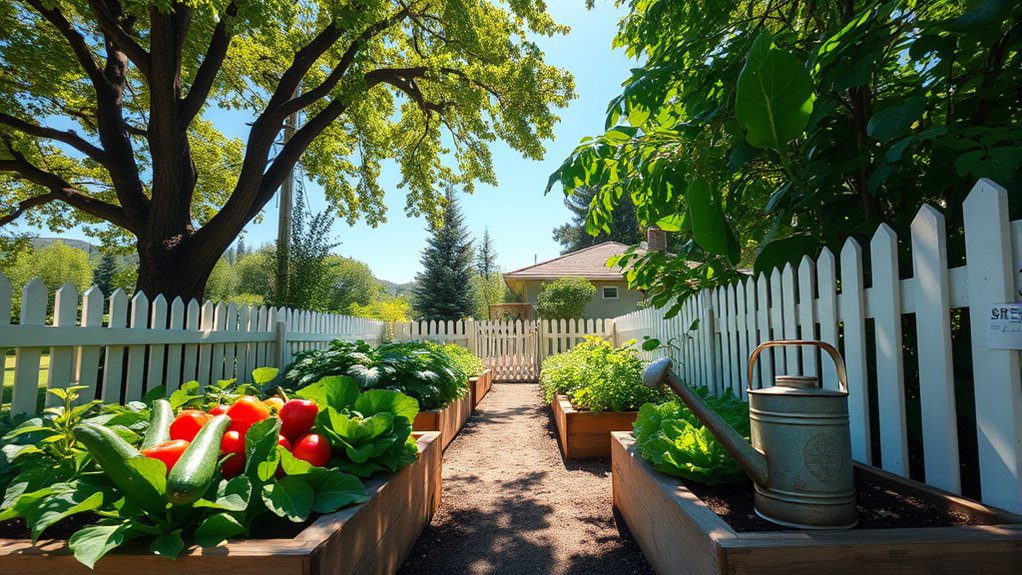
Choosing the right location for your food garden is essential for its success. Look for an area that receives at least 6-8 hours of direct sunlight daily, as most vegetables thrive in bright conditions. Make certain the spot has good drainage to prevent waterlogging and choose a location close to a water source for easy irrigation. Additionally, consider wind patterns and potential pest issues, placing your garden where it’s sheltered yet accessible.
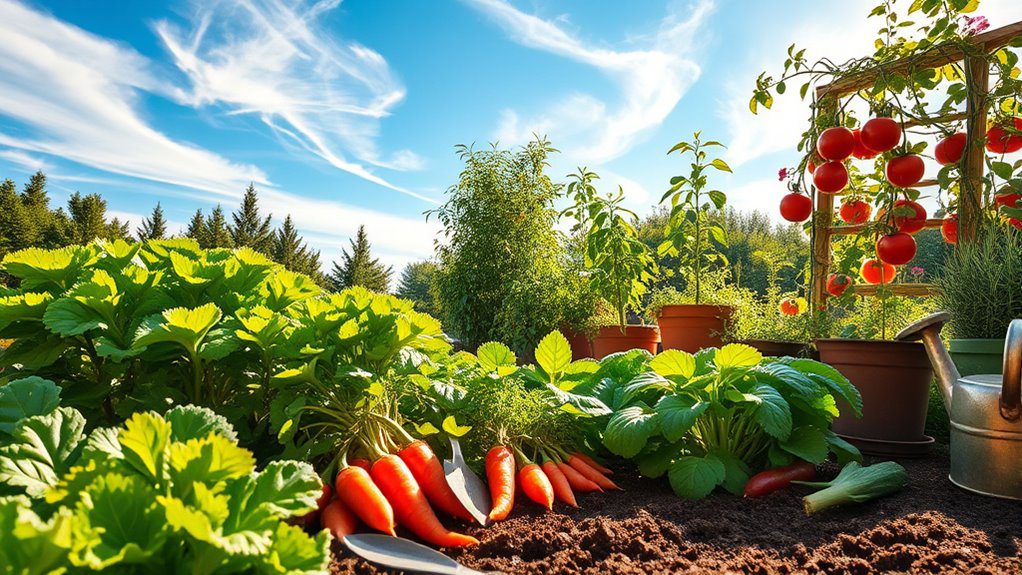
Understanding your climate zone is essential for successful food gardening. Climate zones determine the types of plants that thrive in your area based on temperature, rainfall, and seasonal changes. Familiarize yourself with your specific zone using resources like the USDA Plant Hardiness Zone Map. This knowledge will guide your choices in selecting seeds and plants, ensuring they are well-suited to your environment, therefore promoting a fruitful and sustainable garden.
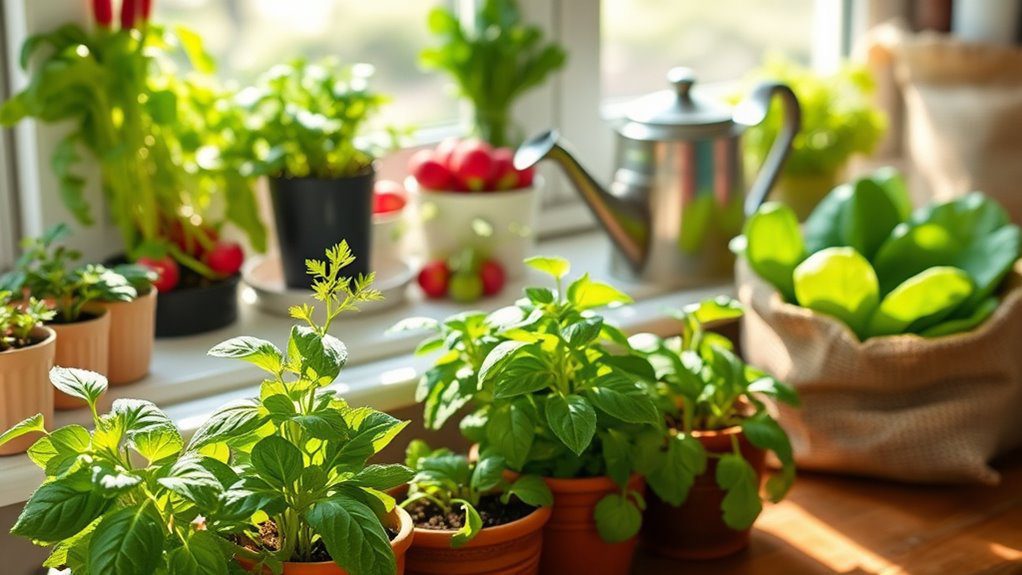
When starting your food garden, it’s best to choose easy-to-grow plants that will boost your confidence and success. Consider starting with herbs like basil and parsley, or vegetables such as radishes and lettuce. These plants typically require less maintenance and have shorter growth cycles, allowing for quicker harvests. Plus, they thrive in various conditions and are resilient against common pests, making them perfect for beginner gardeners keen to cultivate their green thumbs.
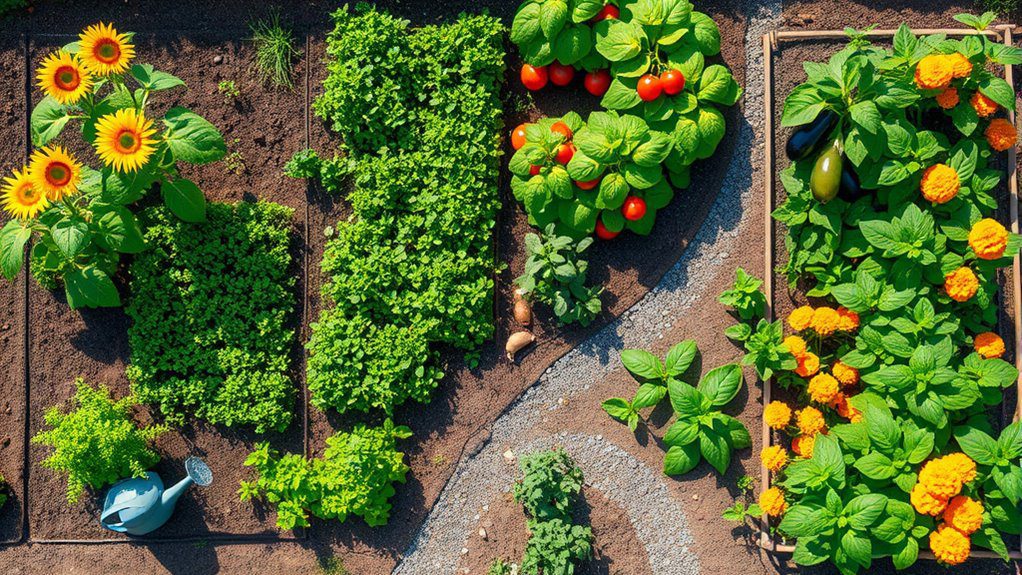
Planning your garden layout is essential for maximizing space and guaranteeing healthy plant growth. Begin by considering your available sunlight, soil type, and water access. Sketch a diagram to allocate areas for various plants, keeping taller varieties on the north side and shorter ones to the south. Incorporate pathways for easy access and guarantee proper spacing to prevent overcrowding. Emphasizing companion planting can also enhance yields and deter pests, creating a thriving food garden.

Investing in quality soil is fundamental for a thriving food garden. Healthy soil is rich in nutrients and organic matter, providing the ideal foundation for plants to grow. Look for options that have good drainage, a balanced pH, and ample organic compost to promote microbial activity. Testing your soil can help you identify deficiencies, allowing you to amend it appropriately. Remember, quality soil leads to healthier plants and a more abundant harvest!
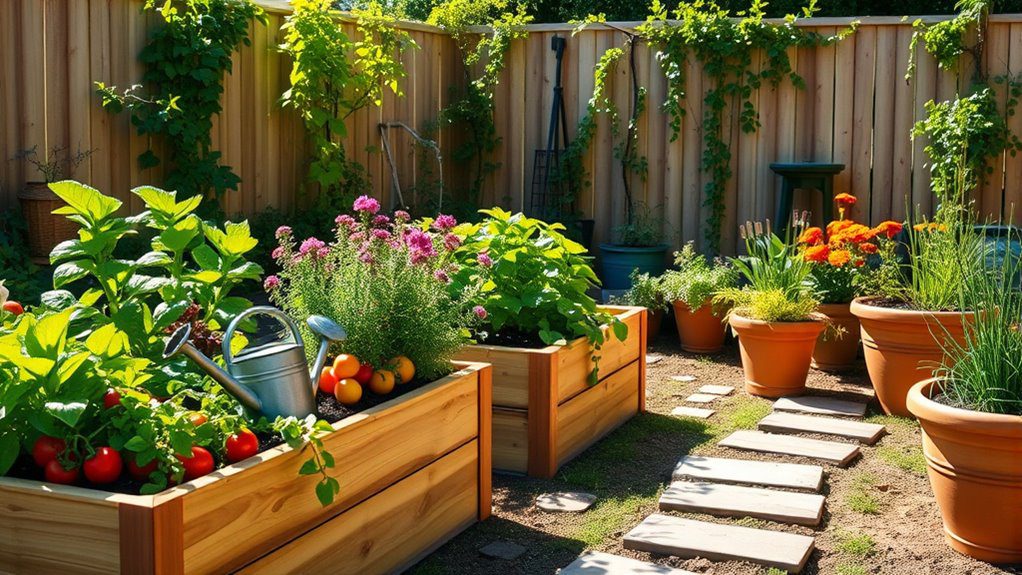
Utilizing raised beds or containers for your food garden offers numerous advantages. Elevated planters improve drainage and soil quality, making it easier to control growing conditions. They also reduce soil compaction and minimize weeds. Containers provide flexibility, allowing you to grow a variety of plants in limited spaces or even indoors. Both options create a more accessible gardening experience, making planting, maintaining, and harvesting more convenient for gardeners of all ages and abilities.
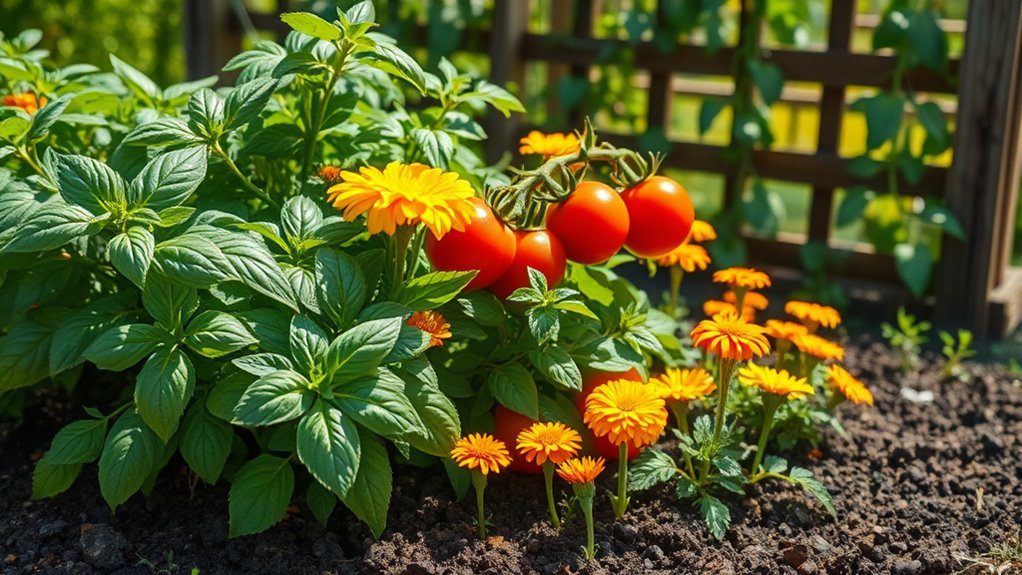
Companion planting is a gardening technique that involves growing different plants together for mutual benefits. Certain plants can enhance each other’s growth, deter pests, and improve soil health. For example, planting marigolds alongside vegetables can repel harmful insects, while basil can enhance the flavor of tomatoes. By understanding which plants work well together, gardeners can create a more productive and sustainable garden, allowing for a healthier ecosystem and better yields. Experimenting with companion planting can make your garden thrive!
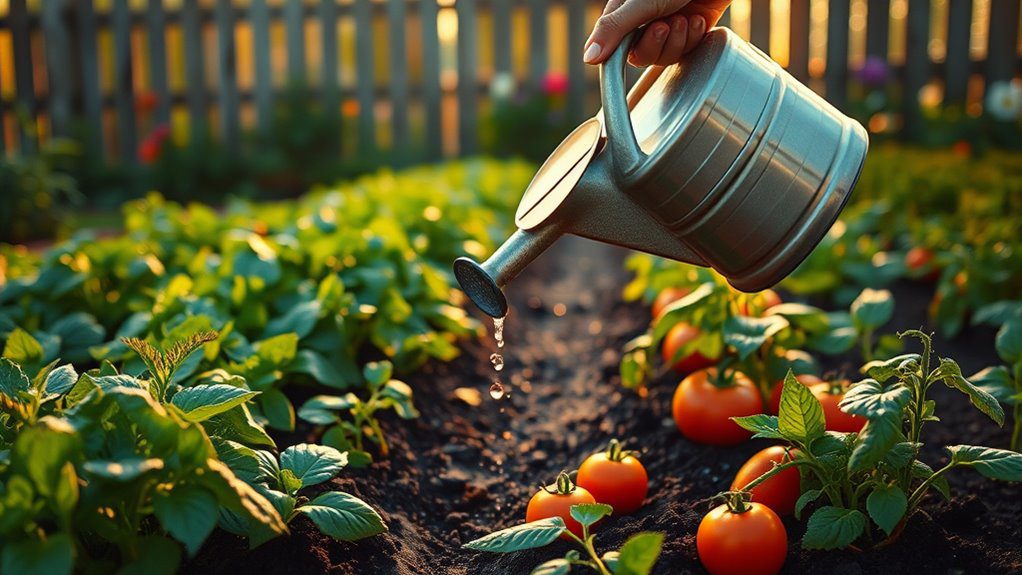
Maintaining a regular watering schedule is essential for the health of your food garden. Consistent watering promotes deep root growth, helps prevent plant stress, and reduces the risk of diseases caused by overwatering or inconsistent moisture levels. Aim to water early in the morning or late in the afternoon to minimize evaporation. Adjust the frequency based on weather conditions, ensuring that the soil remains moist but not soggy. Remember, every plant has unique needs, so pay attention to their signals!
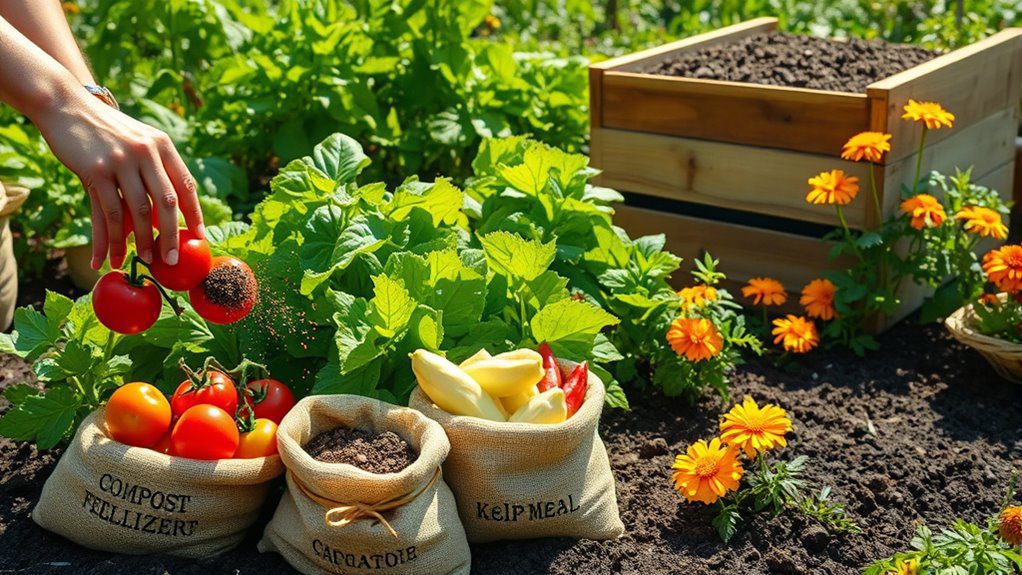
Using organic fertilizers in your food garden is a great way to enhance soil health and promote robust plant growth. Unlike synthetic options, organic fertilizers are derived from natural sources, such as compost, manure, or plant extracts, which enrich the soil with essential nutrients without harmful chemicals. They improve soil structure, boost beneficial microorganisms, and promote sustainability. By opting for organic fertilizers, you not only nourish your plants but also contribute to a healthier ecosystem.
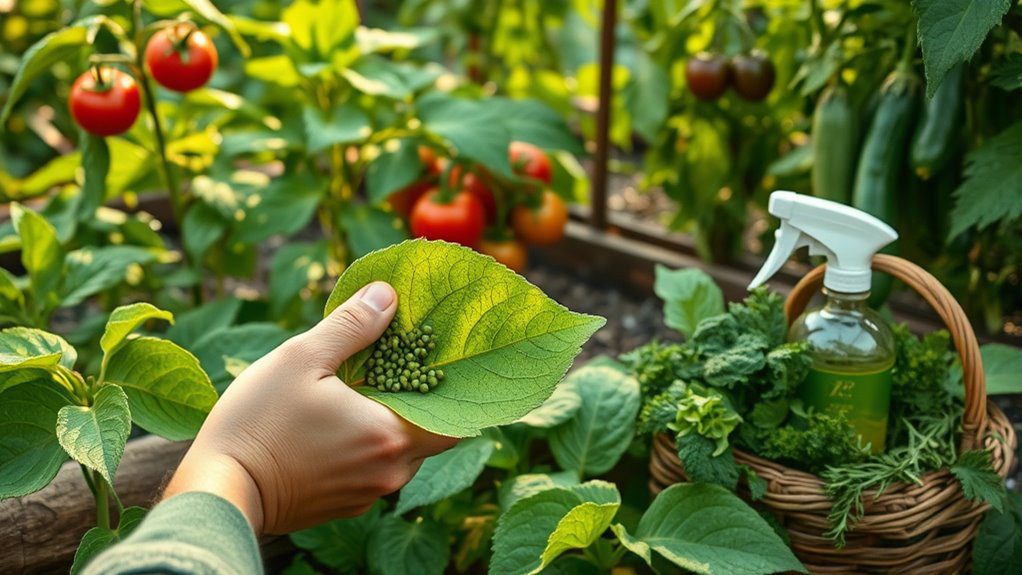
Monitoring for pests and diseases is essential for maintaining a healthy food garden. Regularly inspect your plants for signs of infestations, such as chewed leaves or discolored spots. Early detection is key; look for pests like aphids, spider mites, and caterpillars. Additionally, watch for symptoms of diseases like powdery mildew or blight. Implement preventive measures, like crop rotation and organic pesticides, to keep your garden thriving and minimize damage.
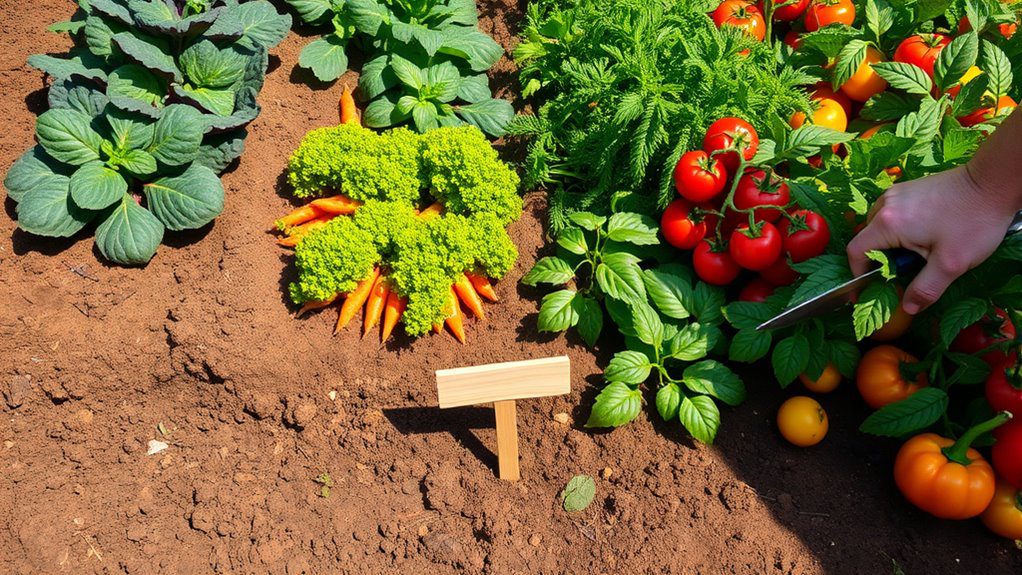
Implementing crop rotation is an essential practice for maintaining soil health and enhancing garden productivity. By alternating the types of crops grown in a specific area each season, you can prevent soil depletion and reduce pest and disease buildup. Different plants have varying nutrient needs and root structures, which can improve soil structure and fertility. Additionally, crop rotation can disrupt the lifecycle of pests, making your garden more resilient and sustainable over time.
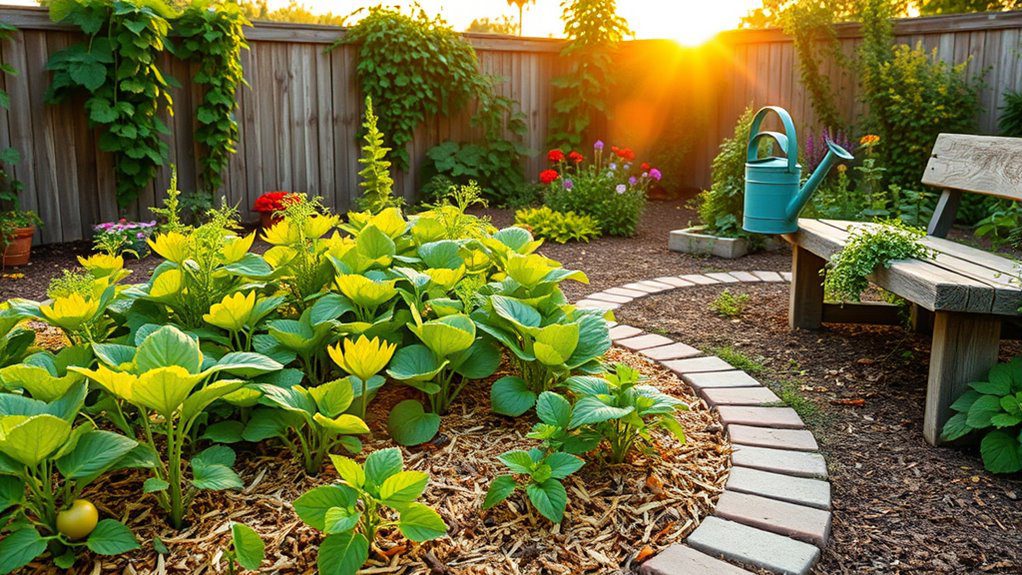
Incorporating mulching techniques into your food garden can greatly enhance its health and productivity. Mulch helps to retain soil moisture, suppress weeds, and regulate soil temperature. Organic mulches, such as straw, wood chips, or grass clippings, enrich the soil as they decompose, providing essential nutrients for your plants. Aim to apply a 2-4 inch layer of mulch around your plants, ensuring it doesn’t touch the stems to prevent rot. Regularly replenish the mulch as needed for ideal benefits.
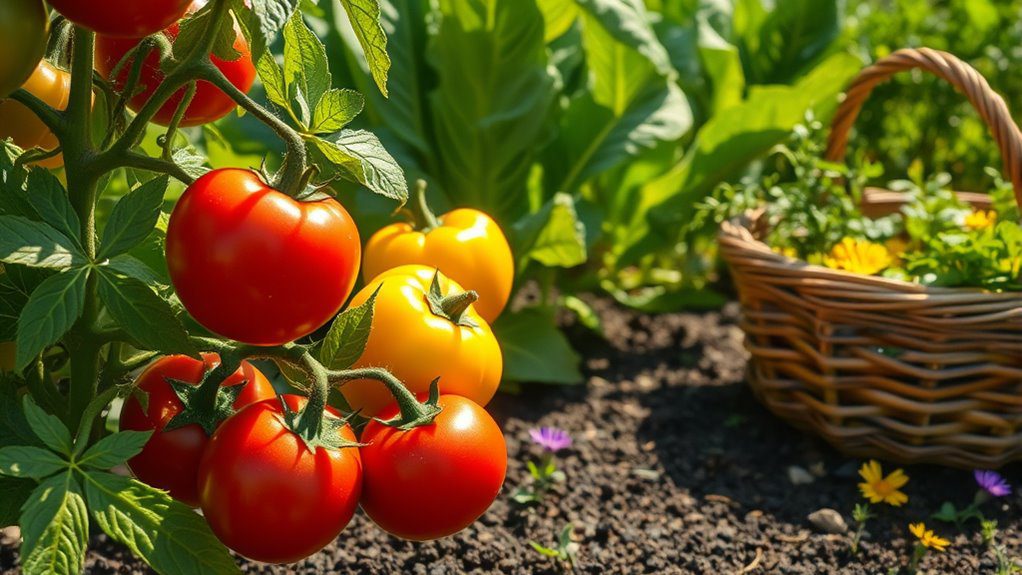
Harvesting at the right time is vital for maximizing the flavor, nutrition, and yield of your crops. Each type of plant has its ideal harvesting window, which can vary based on growth conditions and variety. For best taste, pick fruits and vegetables at their peak ripeness—this is often when they are full-grown, vibrant in color, and firm to the touch. Regularly check your garden to guarantee you don’t miss the perfect moment for harvest!
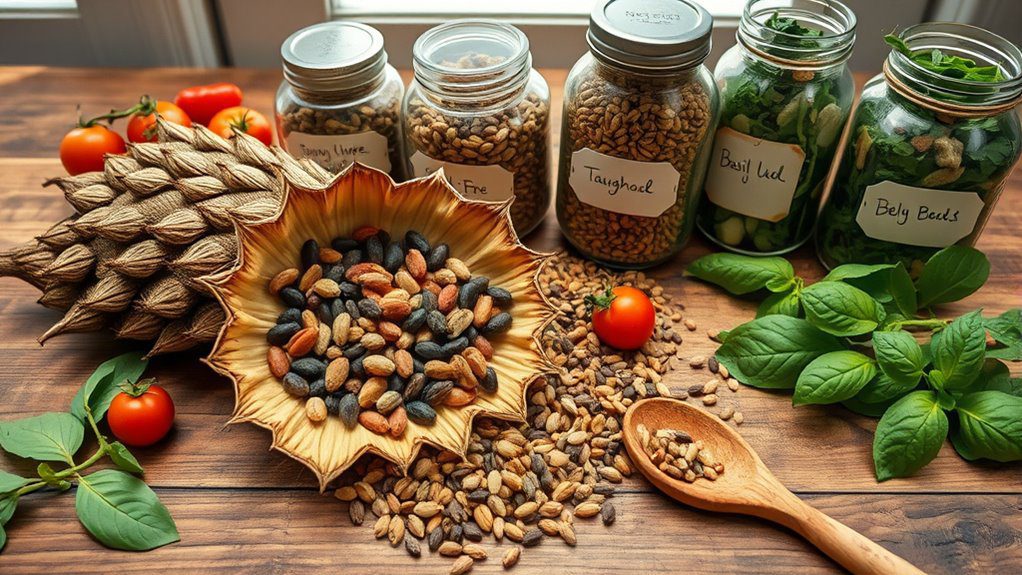
Saving seeds for future planting is a sustainable practice that allows gardeners to preserve their favorite varieties of plants while reducing costs. Begin by selecting healthy, mature seeds from your best plants at the end of the growing season. Make certain they are properly dried and stored in a cool, dark place to maintain viability. Label your saved seeds with the plant variety and date to keep track. This not only fosters a self-sufficient garden but also promotes biodiversity.
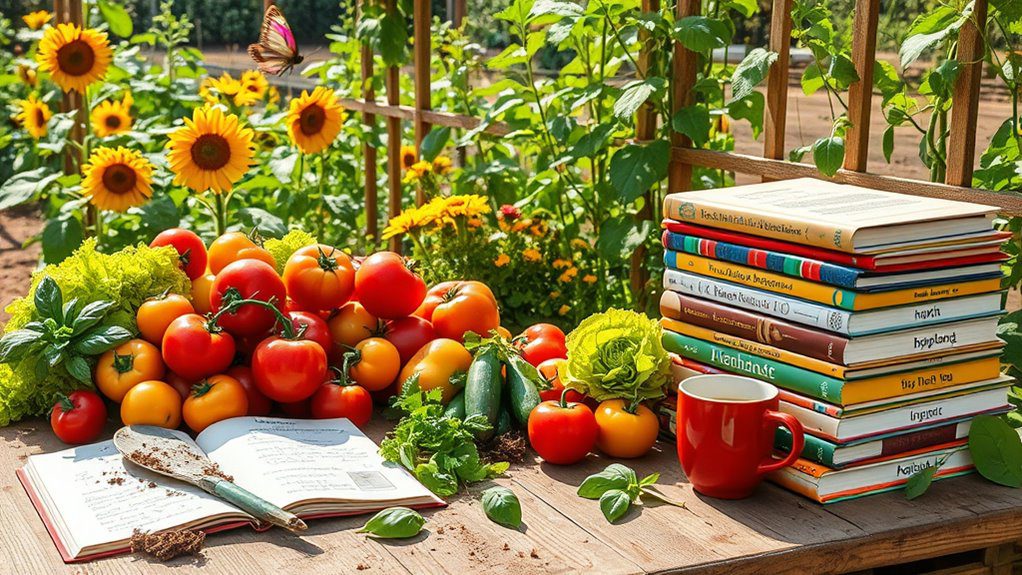
Continuing to learn and experiment in the garden is essential for any gardener looking to enhance their skills and yield. Stay curious by reading books, attending workshops, or joining gardening clubs. Embrace different planting techniques, soil amendments, and companion planting strategies. Document your successes and failures to understand what works best in your unique environment. Each season offers new lessons, so don’t hesitate to try new plants or methods. This hands-on approach not only boosts your knowledge but also makes gardening an exciting adventure.
To sum up, by following these 15 essential tips, you can create a thriving food garden that yields fresh produce all year round. Did you know that home gardens can reduce household food costs by up to 25%? This statistic highlights not only the financial benefits but also the positive impact on your health and well-being. Keep experimenting, learning, and sharing your gardening adventures to continuously improve your skills and enjoy the rewards that come with nurturing your garden.

Don't let aphids, slugs, and caterpillars ruin another plant. Take back control with simple, natural methods that actually work.